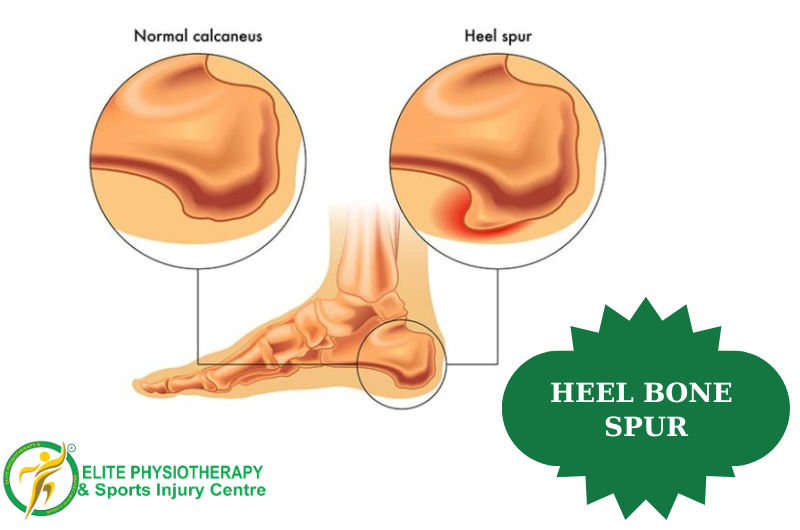
Heel Bone Spur
A heel bone spur is a bony growth under the heel bone caused by prolonged strain on foot muscles and ligaments. It often results in sharp, stabbing heel pain, especially in the morning or after rest.
Questions
What is a heel bone spur?
A heel bone spur, also known as a calcaneal spur, is a bony growth that forms on the underside of the heel bone (calcaneus). This growth often results from repetitive strain on the foot muscles and ligaments, leading to calcium deposits that build up over time. Heel spurs can cause pain and discomfort, particularly during walking or standing.
What causes heel bone spurs?
Heel bone spurs are primarily caused by repetitive stress and strain on the foot. Contributing factors include:
Overuse from activities such as running, jogging, or jumping.
Wearing improperly fitting or unsupportive footwear.
Obesity, which increases pressure on the feet.
Age-related wear and tear.
Conditions like plantar fasciitis, which is inflammation of the tissue connecting the heel bone to the toes.What are the symptoms of a heel bone spur?
Common symptoms of a heel bone spur include:
Sharp pain in the heel, especially when standing up in the morning.
Chronic pain that persists throughout the day.
Inflammation and swelling at the front of the heel.
A visible bony protrusion in severe cases.
Tenderness and difficulty walking or engaging in physical activities.How are heel bone spurs diagnosed?
Diagnosis typically involves a combination of physical examination and imaging tests:
Physical Examination: A healthcare provider will check for tenderness, pain, and inflammation in the heel.
X-rays: Imaging helps to confirm the presence of a bone spur and to rule out other potential causes of heel pain.What treatment options are available for heel bone spurs?
Treatment aims to reduce pain and inflammation, and may include:
Rest: Reducing physical activity to allow the heel to heal.
Ice Therapy: Applying ice packs to the heel to reduce inflammation.
Pain Relievers: Over-the-counter medications such as ibuprofen or acetaminophen.
Physiotherapy: Stretching and strengthening exercises to improve flexibility and support.
Orthotic Devices: Custom-made shoe inserts to provide cushioning and support.
Footwear Changes: Switching to shoes with better arch support and cushioning.
Injections: Corticosteroid injections to reduce severe inflammation and pain.
Surgery: In rare cases, surgical removal of the spur may be necessary.How Elite Physiotherapy and Sports Injury Centre can help you?
Elite Physiotherapy and Sports Injury Centre offers comprehensive care for heel bone spurs. Our expert team provides personalized treatment plans that include physical therapy, stretching exercises, and custom orthotics to alleviate pain and improve mobility. We also offer pain management techniques such as cryotherapy and extracorporeal shockwave therapy. With our state-of-the-art facilities and professional guidance, we help you recover quickly and return to your active lifestyle with minimal discomfort.

